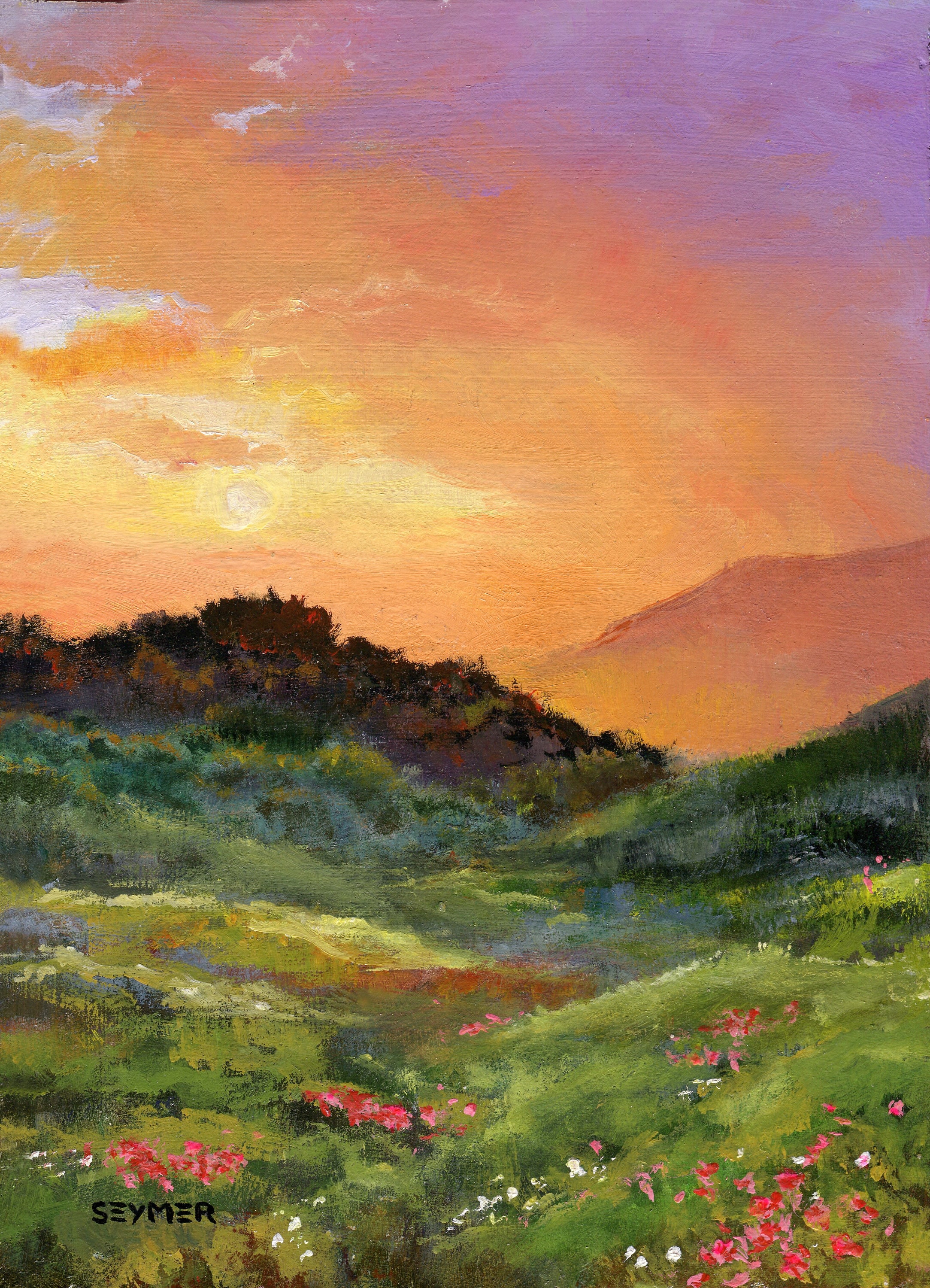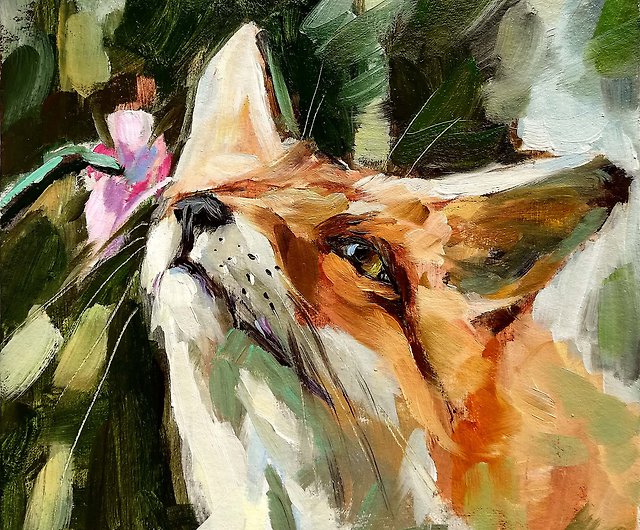Beautiful Artist-Created Oil Paintings for Sale from Workshops
Beautiful Artist-Created Oil Paintings for Sale from Workshops
Blog Article
Discovering Everything About Oil Paints: A Guide to Understanding Their Elegance and Value
Oil paints have mesmerized audiences for centuries, offering a look into the imaginative mastery of various ages. Their rich history is intertwined with innovative techniques and extensive emotional expression. Comprehending the materials and techniques behind these artworks can boost admiration. In addition, the market for oil paintings offers possibilities for investors and collection agencies alike. As one explores this fascinating world, the inquiry arises: what makes an oil paint truly important?
The History of Oil Painting: A Journey Via Time
Oil painting has origins that date back to old times, it absolutely grew throughout the Renaissance, when musicians uncovered its flexibility and rich shade possibility. Early instances can be traced to the 7th century, with methods developing especially throughout cultures. The medium ended up being popular in Northern Europe in the 15th century, especially with the jobs of musicians like Jan van Eyck, that pioneered its usage for in-depth realism and vivid hues. This duration noted a separation from tempera paints, enabling for better depth and structure. As oil painting spread, it influenced many musicians, bring about masterpieces by popular numbers such as Leonardo da Vinci and Rembrandt. The medium's legacy continues, shaping the art world well right into modern-day times.
Understanding Oil Repaints: Materials and Techniques
As artists explore the globe of oil paints, they run into a diverse range of materials and methods that specify this medium. The main parts of oil paint consist of pigments, which give shade, and drying out oils, such as linseed, that bind the pigments and promote application. Different ingredients can change the paint's structure and drying out time, enhancing convenience. Strategies like glazing, where transparent layers are accumulated, and impasto, which involves applying thick paint, enable various aesthetic effects. In addition, using brushes, scheme blades, and also fingers can produce special structures and surfaces. Understanding these techniques and materials enables musicians to completely reveal their imagination and attain the wanted effect in their art work.
The Function of Shade in Oil Paints
Shade plays a crucial duty in oil paints, affecting both aesthetic charm and psychological resonance. Recognizing color concept basics, including the connections between shades, can boost a musician's capacity to share state of mind and atmosphere. Furthermore, grasping shade blending methods permits for higher depth and splendor in a painting's palette.

Color Concept Fundamentals
Comprehending color theory is vital for musicians working with oil paints, as it forms the structure for creating visually appealing and harmonious compositions. Shade theory incorporates the research study of exactly how shades engage, the shade wheel, and the partnerships between main, additional, and tertiary colors. Artists utilize corresponding colors to enhance contrasts and develop prime focus, while analogous colors promote unity and cohesiveness within a piece. Additionally, the concepts of warm and awesome colors affect the perception of deepness and room in a painting. Realizing these concepts enables musicians to manipulate shade efficiently, leading the customer's eye and connecting their designated message. Proficiency of shade theory inevitably enhances a musician's capability to communicate feelings and ideas through their job.
Emotional Effect of Color
The emotional impact of color in oil paints plays a critical function in how audiences regard and link with art work. Colors evoke certain feelings and state of minds, influencing the customer's emotion. For example, warm shades like oranges and reds can create a sense of heat and power, while trendy tones such as blues and environment-friendlies usually stimulate peace or self-contemplation. Artists strategically select color palettes to improve narrative aspects, directing the target market's emotional journey. The saturation and comparison of shades better intensify these impacts, attracting focus and developing focus. Ultimately, the interaction of shades in oil paintings not only enhances their visual charm however likewise serves as a powerful tool for emotional expression, enriching the customer's experience and interpretation.
Shade Combining Techniques
While numerous facets of oil painting add to the overall structure, understanding shade mixing methods is necessary for attaining desired results and deepness. Shade blending can be come close to through various techniques, including the additive and subtractive procedures. Additive mixing involves incorporating colors of light, while subtractive blending depends on pigments, where colors mix to produce brand-new tones. Artists usually make use of a minimal scheme to create unified jobs, understanding the partnerships in between key, additional, and tertiary colors. Methods such as glazing and scumbling better improve depth and luminosity. By masterfully blending colors, a musician can stimulate feelings, create prime focus, and accomplish a sense of realism, inevitably boosting the painting's psychological and visual impact.
Famous Oil Painters and Their Iconic Works

Well known for their proficiency of shade and strategy, oil painters have developed some of the most celebrated art work in history. Distinguished musicians like Vincent van Gogh astounded target markets with his stirring brushwork in "Starry Night," while Claude Monet's "Impression, Sunup" laid the foundation for Impressionism. Leonardo da Vinci's "Mona Lisa" stays a long-lasting symbol of artistic brilliant, showcasing his skill in catching human expression. At the same time, Rembrandt's "The Evening Watch" highlights his ingenious use of light and darkness. Other notable figures include Pablo Picasso, that changed modern art with his vibrant experimentation in works like "Les Demoiselles d'Avignon," and Georgia O'Keeffe, whose lively representations of blossoms and landscapes helped specify American innovation. Each musician's one-of-a-kind style contributed greatly to the oil paint landscape.
Exactly how to Assess the Quality of an Oil Painting
Evaluating the quality of an oil painting involves a cautious assessment of craftsmanship methods, in addition to an analysis of color and make-up. Observing brushwork, layering, and the application of paint can expose the artist's ability degree. In addition, the interplay of shades and the general plan of components add significantly to the paint's aesthetic worth.
Evaluating Workmanship Strategies
A meticulous assessment of workmanship strategies is necessary for identifying the quality of an oil paint. Evaluators must first examine the application of paint; thick, distinctive brushstrokes might recommend a knowledgeable hand, while extremely consistent applications can show an absence of depth. oil paintings for sale. The layering method is additionally crucial; the visibility of lusters and varied density can boost luminosity and complexity. Additionally, the high quality of the materials made use of, such as the canvas and pigments, plays a significant function in longevity and general visual. Interest to detail in aspects like sides and shifts in between shades shows the artist's dedication to their craft. Ultimately, these methods contribute to the paint's psychological influence and market worth, functioning as signs of the musician's skill and intent
Examining Shade and Structure
While reviewing the top quality of an oil painting, one need to focus on the interaction of color and make-up, as these aspects are fundamental to the art work's total impact. Color choices can stimulate emotions and read more establish mood; consequently, the musician's combination ought to be taken a look at for harmony and contrast. A well-balanced structure directs the visitor's eye and produces a sense of unity. Musicians often utilize strategies like the rule of thirds or leading lines to boost visual passion. In addition, using light and shadow can include deepness, enhancing the three-dimensionality of the paint. Eventually, a successful oil painting marries color and make-up, involving the visitor and inviting a deeper admiration of the artist's vision and technique.
Caring for and Preserving Oil Paintings
Proper care and conservation of oil paintings is important for keeping their stability and durability. To secure these artworks, it is vital to show them away from straight sunlight, which can cause fading and staining. Maintaining a secure setting with regulated temperature and humidity further aids in avoiding damages. Cleaning should be done gently making use of a soft, dry cloth, preventing any harsh chemicals that can hurt the paint or varnish. Regular evaluations for indications of damage, such as fracturing or flaking, are recommended. When transporting or keeping oil paintings, proper cushioning and framing are necessary to prevent physical damage. Eventually, attentive treatment adds to the visual allure and value of oil paints in time.
The Market for Oil Paints: Spending and gathering
Comprehending the marketplace dynamics for oil paintings is vital for collection agencies and capitalists alike. The value of these artworks is influenced by numerous aspects, consisting of the musician's online reputation, historic value, and existing trends. Collection agencies commonly seek items that resonate personally while considering possible gratitude in value. Public auctions and galleries act as key venues for trading, with rates changing based upon need and rarity. Purchasing oil paints requires research right into the marketplace, in addition to an understanding of authenticity and provenance. Furthermore, arising artists might use opportunities for significant returns, while developed names can command high rates. Overall, a tactical technique to accumulating can produce both visual enjoyment and financial benefits.

Frequently Asked Concerns
What Are the Ecological Impacts of Oil Painting Products?
The environmental influences of oil painting products consist of the release of volatile organic substances (VOCs), harmful waste generation, and source removal for pigments. These elements add to air pollution and environmental deterioration, raising concerns among eco aware musicians and customers.
Just How Do Different Canvases Affect Oil Painting Outcomes?
Different canvases affect oil painting results significantly. Appearance, surface, and absorbency high quality can alter paint application, drying times, and shade vibrancy. Musicians frequently pick particular canvases to accomplish wanted results and improve their artistic expression.
Can Oil Paintings Be Recovered if Harmed?
Oil paints can indeed be restored if damaged. Specialist conservators use numerous techniques to fix tears, clean surfaces, and address staining, making sure that the art work keeps its initial elegance and worth for future generations.
What Are the Signs of an Original Oil Painting?
The indicators of an initial oil painting consist of noticeable brush strokes, appearance variations, and an irregular canvas weave (oil paintings for sale). Furthermore, credibility might be confirmed through provenance, trademarks, and the presence of a varnish layer distinct to oil mediums
Just How Has Innovation Influenced Modern Oil Paint Techniques?
Modern technology has actually significantly influenced modern oil painting methods by introducing electronic tools for preparation, enhanced materials for appearance and durability, and online systems for sharing and marketing art, therefore increasing artists' imaginative possibilities and target market get to. Oil painting has roots that date back to ancient times, it really flourished during the Renaissance, when musicians discovered its convenience and rich shade possibility. The emotional influence of color in oil paints plays an important role in exactly how customers connect and view with art work. While lots of aspects of oil painting add to the general composition, mastering color mixing strategies is important for achieving wanted results and depth. Assessing the top quality of an oil paint includes a cautious evaluation of craftsmanship methods, as well as an evaluation of color and make-up. While examining the high quality of an oil paint, one must concentrate on the interplay of shade and composition, as these aspects are essential to the artwork's general influence.
Report this page